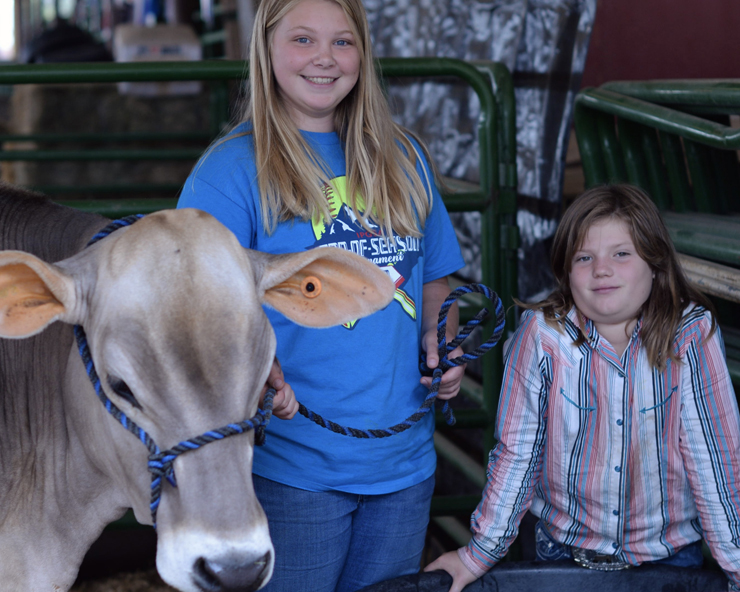The United States is almost two months past the first case of highly pathogenic avian influenza (HPAI) on dairy farms. The disease was first detected in the Texas Panhandle and has now spread to eight more states. Since then, there have also been two cases of HPAI in humans, most likely spread from contact on dairy farms. Those infected only reported mild symptoms related to eye discharge.
There have been multiple routes of HPAI spread, including cow to cow, cow to poultry, spread between dairies linked to cattle movement, and asymptomatic cows testing positive. While HPAI in cows is not as severe as it can be in poultry, it is critical to prioritize animal and human health.
As we move into summer, it becomes fair and dairy cattle exhibition season. These events can provide opportunities for illness to spread, especially across animals from different herds. With that, there are some considerations for show organizers and exhibitors to consider when showing dairy cattle this summer.
Dairy Cattle Exhibition Organizers
Organizing a dairy cattle exhibition this summer could look much different than most summers. With the spread of HPAI, each state will have different concerns and regulations on the movement and exhibition of dairy cattle.
One of the first things event organizers should do is look at regulations put out by state animal health departments. For example, in Michigan, all exhibition of heavily pregnant heifers or lactating dairy cattle is prohibited until there are no new cases of HPAI in dairy cattle in Michigan for at least 60 days, according to Michigan’s HPAI Risk Deduction and Response Order. With that, organizers should also assess the HPAI situation in their state and determine the risk of an event, such as a fair or exhibition.
Before the event, organizers should collect contact information from all exhibitors to quickly reach them, if needed. They also should collect contact information for state animal health officials to ensure they can be reached during the event. Organizers should also have a process to track the origin of all cattle and individual animal identification. One important step is to have a biosecurity plan to limit the co-mingling of cows from different herds, communicate expectations for milking healthy cows, set up isolation areas for sick or cows, and limit contact with the public. An official show veterinarian should also be established to reduce risk and manage sick animals.
During the event, handwashing stations should be available, with signs instructing visitors to wash their hands when leaving animal areas. Communication with exhibitors should be frequent, reviewing animal disease control measures and providing specific actions if an animal becomes sick at the show. Equipment should be cleaned and disinfected often, and good ventilation and temperature controls should be in place. Group water tanks for exhibitors’ animals should not be allowed.
After the event, clean and disinfect animal areas and meet with the show veterinarian and other exhibition organizers to debrief and discuss what went well and areas of improvement.
Dairy Cattle Exhibitors
There are many things to think about when considering whether to attend dairy cattle exhibitions this summer. Assess the risk situation in your state and the availability to quarantine your animals on your premises when you return.
Before the event, become familiar with state regulations and recommendations. If you bring lactating animals to an exhibition, these animals must have a negative test result within seven days of movement. Familiarize yourself with signs of HPAI in cattle and work with your veterinarian to establish any plans regarding biosecurity. Clean and disinfect all equipment you bring to the show, prioritizing milking equipment and vehicles/trailers. Do not haul animals from different premises in the same trailer.
During the event, keep copies of all animal health records and results easily accessible. Carefully observe your livestock for any symptoms of HPAI. If animals show symptoms, isolate them immediately and remove them from the exhibition premises. Follow the event’s biosecurity plan and any event guidance regarding handling milk from lactating animals. Do not share any supplies with any exhibitors.
After the event, quarantine animals for 30 days, observing them for any signs of illness. During this period, do not share equipment between quarantined animals and the rest of the herd. Discuss plans to test animals for HPAI with your veterinarian and consult a health care provider if any individuals develop symptoms. As always, clean and disinfect all equipment you took to the show.
As HPAI spreads and affects dairy herds this summer, carefully consider exhibiting your dairy cattle. If you decide to exhibit your animals, take careful precautions to protect your herd and your health. Read the Recommendations to Minimize Influenza Transmission at Dairy Cattle Livestock Exhibitions for more details.
Resources:
APHIS: Recommendations to Minimize Influenza Transmission at Dairy Cattle Livestock Exhibitions
CFSPH: Cleaning and disinfection for organic and alternative farms
CFSPH: Cleaning and disinfection
HPAI Staff Biosecurity Information and Checklist for Cattle Farms
Cornell: Cleaning and Disinfection on the Dairy Farm
APHIS: HPAI Detections in Livestock
Bring Home the Blue, Not the Flu
Photo Source: Dr. Katie Steneroden

